Is it weird to pull out a smart phone in Cuba? Not at all. You’ll be just as hip as other Cubans checking your phone.
Cuba is transitioning fast with technology. And Cubans are just like the rest of us – they want to stay connected to their friends, family, and the world. In Cuba Facebook rules. Because I work closely with media and technology, I’m fascinated by how technology is being used where we travel. What are the patterns? How is it different? Traveling Cuba for two weeks, here are four observations that stood out for me:
#1 In Cuba Facebook is everywhere
Yep – Facebook is big in Cuba too. In parks where public WiFi is available, you’ll see folks engrossed in their devices. Being curious, I often glanced at their screens (though not long enough to read anything!). More often than not, I recognized Facebook. Mark Zuckerberg has laudable mission to connect the entire world – he’s well on his way in Cuba.
When we visited the Kcho Art center in Havana, a community center focused on art, education, and theater – all the free computers seemed to have Facebook on them. (The center’s name comes from the founder, a famous Cuban artist named “Kcho”). The center contributes back to the community (an important value we saw across Cuba) by offering free art classes, a library, and free internet access via their computers. Normally to get on the internet you have to purchase a card from the State run agency, even to connect to any WiFi, but not at the Kcho center. In fact, Google recently sponsored fast internet connectivity at the Kcho center, donating some twenty Chromebooks. We saw locals lined up to get their 30-minute access. We happened to be in the computer lab building when a group received their turn and enthusiastically rushed in – every single one went straight to Facebook.
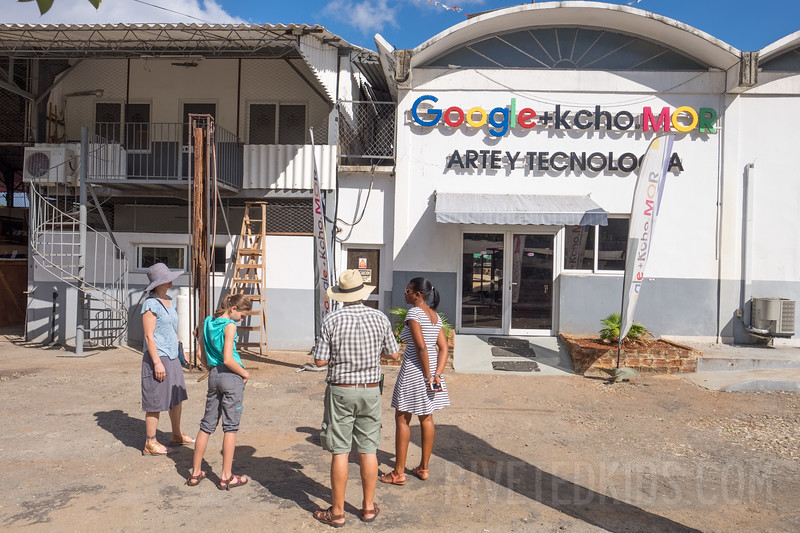 Kymber, Beija, Mauricio, and a Kcho center guide
Kymber, Beija, Mauricio, and a Kcho center guide
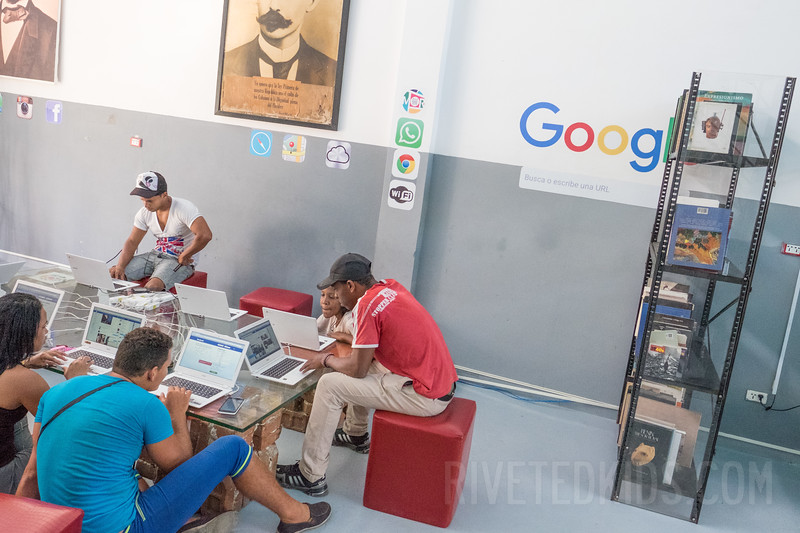
Getting widespread internet and faster speeds is important for education, access to health and other services, and is an important step forward to connect Cuba with each other and the world. More details here on how Google is trying to make it faster and easier to get on the internet for Cubans.
#2 Music, Music Video TV, and Movies are everywhere
On Christmas day we took a taxi to the beach with Rosana and her friend, the daughter from our casa particular (bed and breakfast). The high school girls were in the front seat – we were in back. The red and white 1950s car had a modern sound system that even included a video screen. I could see a USB stick inserted into it. Even in the car, listening to music was essentially listening to a music video soundtrack.
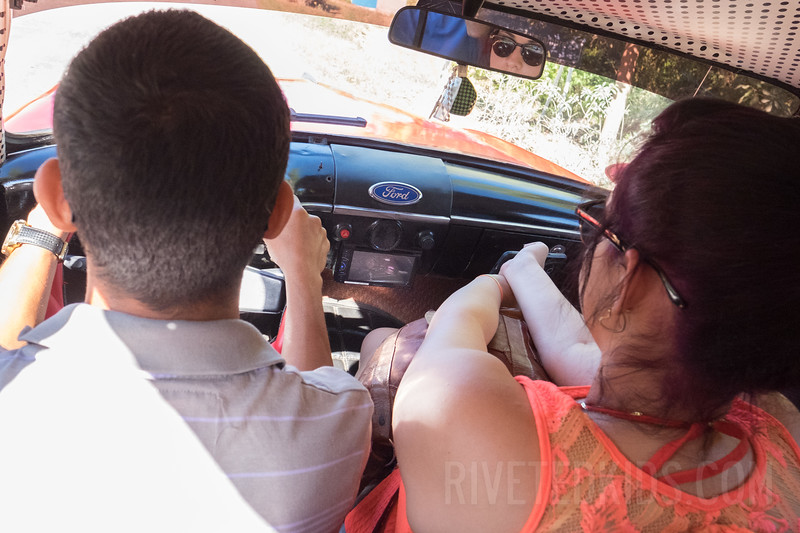
Notice the video playing on the dashboard. I noticed more and more USB sticks sticking out of car stereos and sound systems at restaurants.
Our Cuban guide and friend Mauricio explained that it was very easy to get all the latest music, videos, and movies by taking a USB stick to some store – and for a few pesos, you could load up on all the latest songs, movies, and TV shows from around the world. See Mauricio’s profile. Many devices like car stereos, sound systems, and TVs seemed to all support sticking in a USB stick to get the entertainment going.
As a traveler, I wondered if pervasive consumer electronics were limited to the touristy spots, but looking into some of the houses where we wandered at night, music was pervasive, sometimes with just an older person sitting down in front of a large TV blaring the latest reggaetón out of Colombia.

At one casa particular, the family had a PlayStation 3 hooked up to their large flat screen TV
#3 Everyone has a smart phone
Even driving from the airport into Havana, I could see the use of cell phones. Pedestrians were on cell phones. And another universal: drivers texting while stopped at lights. On the street, necks were bent downward, another universal for message checking. Reymi, our taxi driver, confirmed that most everyone these days has a smart phone.
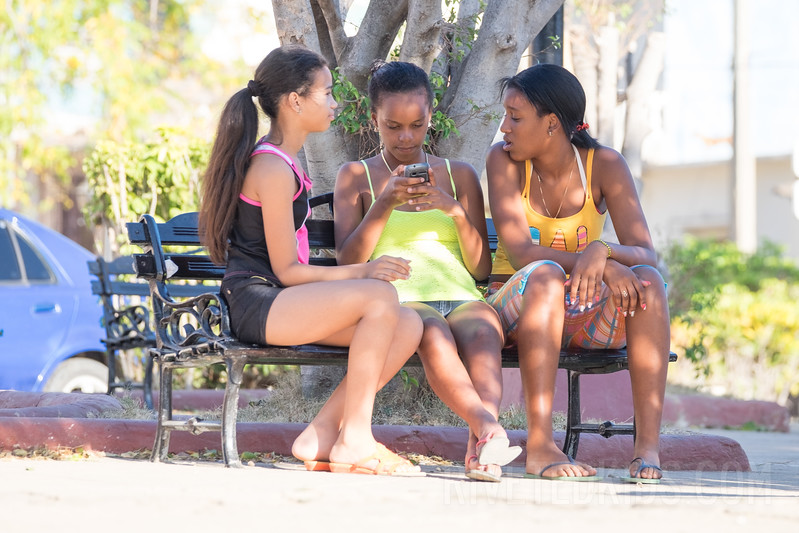
The devices were what you’d expect, Android phones and some iPhones even (or maybe they were iPod touches?) I even saw a Windows phone at one point. What this means is that Cubans are very familiar with many of the same apps that are used by much of the world, including games and social apps. Here’s Kenny, our guide from Las Terrazas, showing me his Android phone and the apps that he frequently uses.
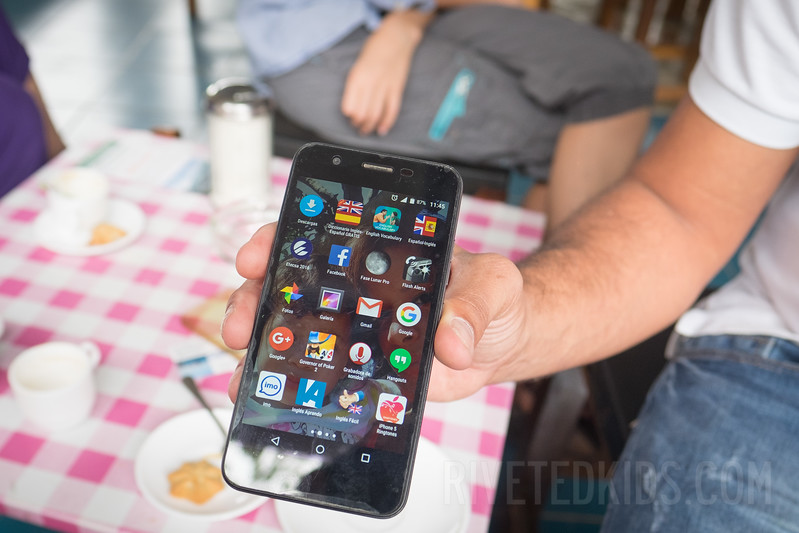
As a traveler, you’ll be right at home pulling out your cell phone to take a photo or video.
#4 WiFi is in some public parks
You’ll know when you hit a public WiFi spot because you will see young and old people sitting next to each other, looking down at their screens. Typically, these areas are in the squares or parks. At night, check out a plaza with WiFi – you can see the faces lit up in blue from the screen lights. Hotels and fancier restaurants also usually have networks that you can join. But you’ll need more codes to get on the internet itself – and a process that can be a bit of a hassle. (Stay tuned for a post on getting internet in Cuba.)

We drove by a park in Havana where there was clearly WiFi
In Sum
Cuba is at an fascinating transition where more and more people have access to smart phones, increased internet connectivity, social media, and music from around the world. Like any of us, there’s a strong desire to stay connected socially with friends and family, whether in Cuba or around the world. I think that the efforts to help get more reliable connectivity can only result in improved education and shared values across the globe. I’m impressed by Google’s support in the Kcho center. Connectivity really can build bridges.
Tips
- Before you go, download your favorite songs to your phone. For example, in Spotify and Google Play Music you can save tracks to play offline. And take a mini-audio plug just in case. You might find yourself in a taxi or at a house where you could share your favorite music. MP3s should work too if you have your own collection that you can get onto a USB stick.
- Once in Cuba, be prepared for limited internet connectivity (post coming soon).
Leave a Reply